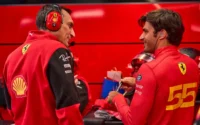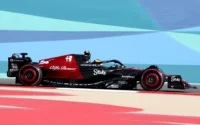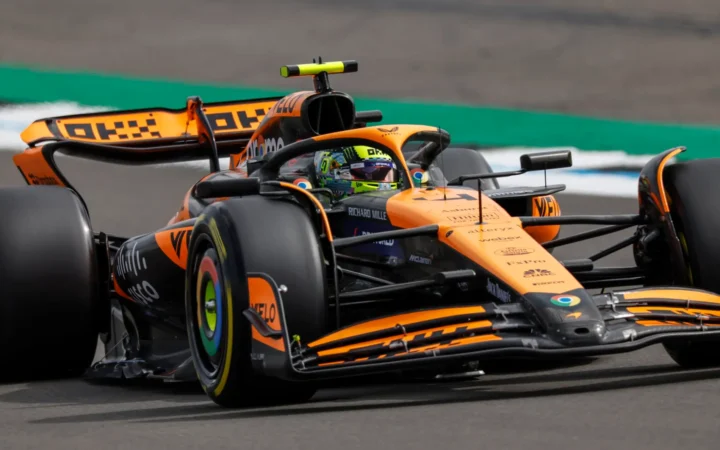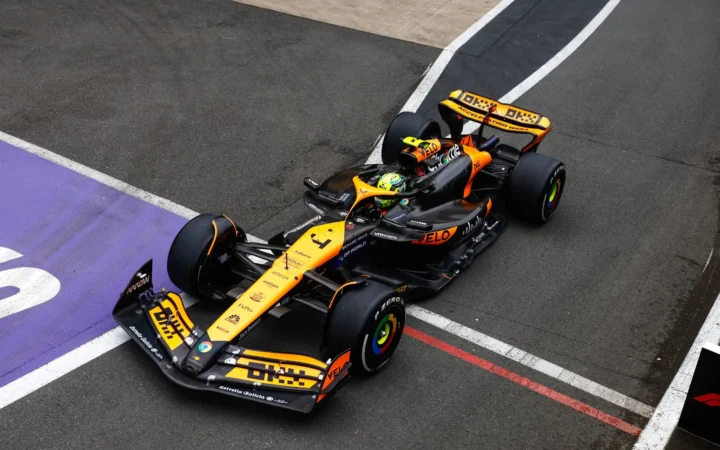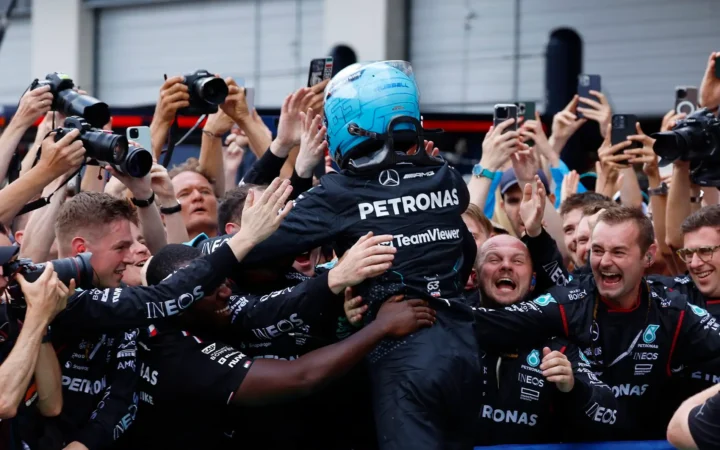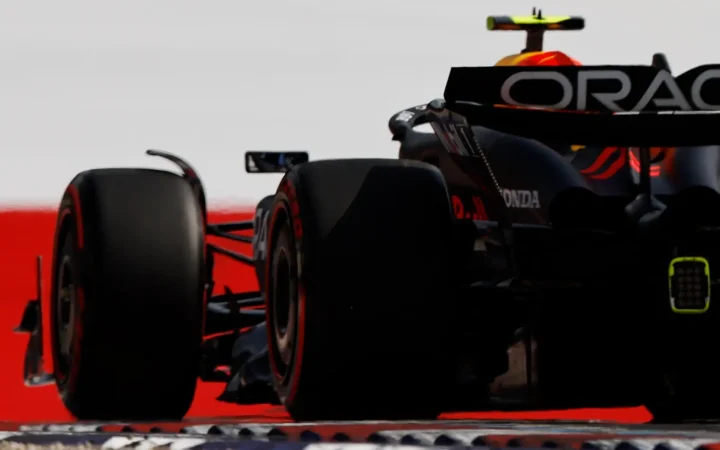Strategic concealment in F1 is the reason behind the varied floor designs seen in McLaren’s images and Red Bull’s efforts to obscure the sidepod inlets on its newly launched RB20, aiming to delay rivals’ understanding of their true intentions.
In this game of deception, some teams take it a step further by introducing deliberate misdirections.
Formula One History Recommends
A notable example was the fake serrated floor featured in Alfa Romeo‘s promotional images a year ago.
Joining this tradition of deception, Mercedes recently caused a stir with its W15 reveal, which, on detailed examination, showcased a peculiar addition: an extra suspension arm at the car’s front end.
This anomaly, seemingly a playful ruse by Mercedes, surprisingly didn’t capture much attention during the launch, overshadowed by the focus on the car’s legitimate modifications.
However, this concept of a dual suspension arm isn’t entirely new to F1. A similar tactic was employed by Williams in 2019 with its FW42, where a separate fairing seemed to encompass one of the wheel tethers for aerodynamic advantages. This move quickly caught the FIA’s scrutiny, resulting in a directive to integrate the tether within the fairing of the wishbone’s lower rear leg, aligning with the standard practice.
F1 regulations outline the requirements for suspension connections, including a ban on unnecessary suspension elements and the rule for a steering-connected suspension member on each front wheel.
For Mercedes, this imaginary double suspension arm was an impossibility in practical terms. Yet, amidst the buzz regarding the team’s innovative front-wing design and its compliance with regulations, this distraction was surely aimed at competitors to lead them on a fruitless speculative chase.
Seen in:




